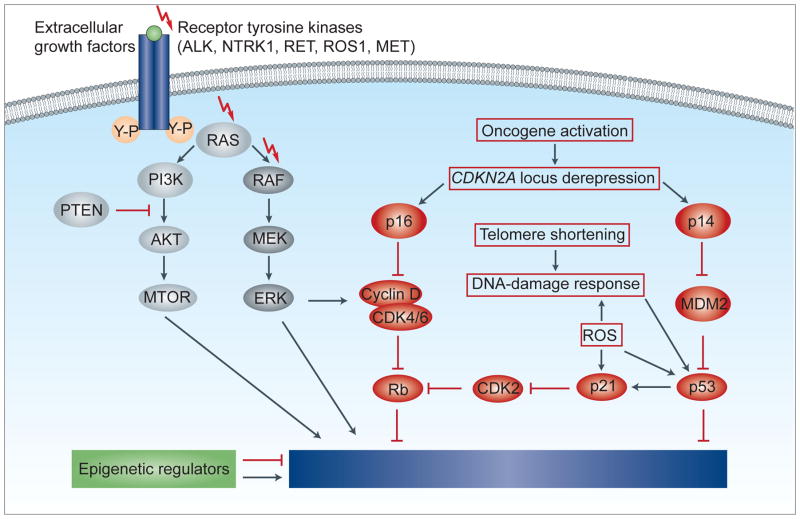Fig. 8.
Molecular pathways of proliferation, survival and senescence. Extracellular growth factors trigger the dimerisation of receptor tyrosine kinases, leading to autophosphorylation and activation of intracellular signalling cascades such as the MAPK/ERK or the PI3K/AKT/mTOR pathway. Among a variety of other functions, these signalling pathways increase cell proliferation and survival. Many of the components, especially of the MAPK/ERK pathway, show genetic aberrations in spitzoid melanocytic tumours, which lead to a constitutive pathway activation. However, the activation of oncogenic pathways epigenetically de-represses the CDKN2A locus, encoding the proteins p16 and p14. Oncogene activation and cell proliferation may also lead to telomere shortening and increased concentrations of reactive oxygen species (ROS), which causes a DNA-damage response and activates p53 and p21. The signalling cascades of the p16 and p53 pathway converge on the tumour suppressor retinoblastoma (Rb) and on cell cycle inhibitors. After initial cell proliferation, these signalling pathways cause a durable proliferative arrest, termed senescence.

